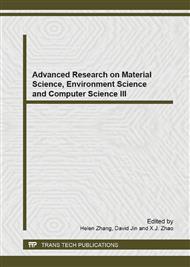p.668
p.673
p.677
p.681
p.686
p.690
p.694
p.698
p.702
Component Subnet Combination and its Case Study under the Model of EOOPN
Abstract:
Base on the Extended Object-Oriented Petri Net, and the component evolution processes that has been proposed in our previous research, this paper studies on the issue of software component subnet combination under the model of EOOPN. Three types of combination of EOOPN subnets were defined and the illustration of subnet combination was given with a case study. This papers work laid foundations for the further presentational and analytical aspects of component evolution.
Info:
Periodical:
Pages:
686-689
Citation:
Online since:
January 2014
Authors:
Keywords:
Price:
Сopyright:
© 2014 Trans Tech Publications Ltd. All Rights Reserved
Share:
Citation:


